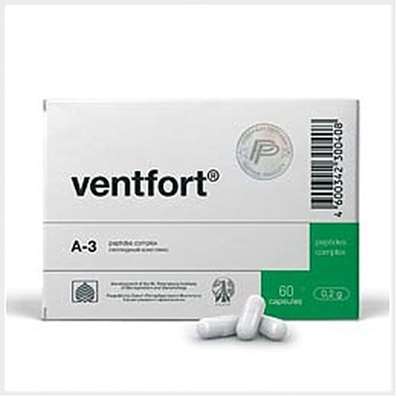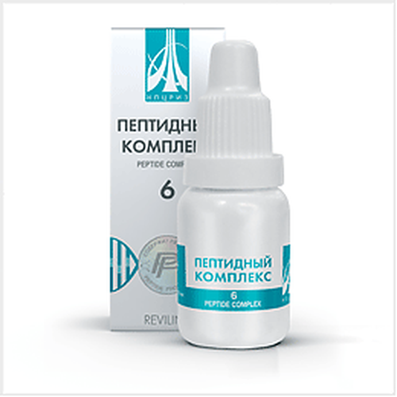Instruction for use: Agapurin 600 retard
I want this, give me price
Dosage form: Retard coated tablets
Active substance: Pentoxyphyllinum
ATX
C04AD03 Pentoxifylline
Pharmacological group
Adenosinergic agents
Angioprotectors and microcirculatory correctors
The nosological classification (ICD-10)
H34 Vascular occlusion of retina: Arterial thrombosis of the vessels of the eye; Venous thrombosis of the vessels of the eye; Violation of retinal circulation; Disturbances of intraocular circulation; Insufficient blood supply to the mesh and choroid; Occlusion of central retinal vessels; Acute obstruction of retinal arteries; Subacute and chronic circulatory insufficiency in the retina or in the choroid of the eye; Vascular diseases of the retina; Vascular disorders in the retina of the eye; Vascular thrombosis of the retina; Central retinal vein thrombosis; Thrombosis of the central vein of the retina and its branches; Thrombosis of the central vein of the retina of the eye and its branches
H34.0 Transient retinal arterial occlusion: Subacute and chronic circulatory insufficiency in the retina or in the choroid of the eye; Angiospastic changes in the retina; Spasm of retinal arteries; Disturbances of blood circulation of the eye
H34.2 Other retinal arterial occlusions: Retinal vasospasm; Retinal artery thrombosis
H81 Disorders of vestibular function: Vestibulopathy; Labyrinthine-vestibular disorders; Cochleovestibular syndrome; Vestibular disorder; Vestibular abnormalities; Vertigo of labyrinth origin; Violation of microcirculation in the labyrinth; Cochleovestibular disorder; Cohleo-vestibular disorder of ischemic nature; Disorders of the vestibular apparatus
H83 Other internal ear disorders: Disturbance of inner ear function; Violation of the inner ear function of vascular genesis; Disturbances of blood supply to the inner ear; Functional disorder of the inner ear
H91 Other hearing loss: Age-related vascular hearing loss; Age-related vascular drop in hearing; Age-related hearing impairment; Idiopathic hearing loss; Decreased acuity of hearing; Hearing loss; Deteriorating hearing of vascular or toxic origin; Perceptual hearing loss
I60-I69 Cerebrovascular diseases
I69 The effects of cerebrovascular disease: Ischemic and post-stroke condition; Residual effects of hemorrhagic stroke; Residual effects of ischemic stroke; Residual effects of cerebral circulation; Residual effects of subarachnoid hemorrhage; Ischemic stroke; Transferred thromboembolic stroke; The consequence of cerebrovascular accident; The consequence of insufficient blood supply to the brain; Consequences of ischemic stroke; The consequences of a stroke; Postapopleksicheskoe state; post-stroke period; post-stroke syndrome; Condition after stroke; Condition after cerebrovascular accidents; Chronic cerebrovascular insufficiency
I70 Atherosclerosis: Atherosclerosis; Atherosclerosis of peripheral vessels; Atherosclerotic changes; Atherosclerotic vascular changes; Atherosclerotic disorders; spontaneous; Trombangioz obliterans; Frinlendera disease
I70.2 Atherosclerosis of arteries: arteriosclerosis obliterans; Arteriosclerosis peripheral arteries; Atherosclerosis of the arteries of the lower extremities; Atherosclerosis of peripheral arteries; Atherosclerosis limbs; Occlusive disease of the lower extremities; arteriosclerosis obliterans; Arteriosclerosis obliterans of lower limb arteries; Atherosclerosis obliterans of the upper limbs; Arteriosclerosis obliterans of lower extremities; Atherosclerosis of arteries; limb arteriopathy; Arteriosclerosis obliterans limbs; arteriosclerosis obliterans
I73.0 Raynaud's Syndrome: Raynaud's syndrome Leriche; Raynaud's disease; Raynaud's phenomenon; RaynaudLeriche syndrome; Raynaud's disease; Raynaud's syndrome with trophic disorders; Peripheral angiopathy
I73.1 thromboangiitis obliterans [Buerger's disease]: Berger's disease; thromboangiitis obliterans; trombangiit; thromboangiitis obliterans; Buerger's disease
I73.8 Other specified peripheral vascular disease: Syndrome of intermittent claudication; endarteritis obliterans; acrocyanosis; vasoconstriction; occlusive disease; Intermittent claudication; Disorders of vascular innervation; Spasm of peripheral arteries; Arterial angiopathy; Venous insufficiency and its complications; Spasm of peripheral vessels; The spasm of coronary vessels; endarteritis; cooling stop; Occlusal disorders of peripheral circulation; Peripheral vascular occlusion
I79.2 Peripheral angiopathy in diseases classified elsewhere: diabetic angiopathy; Angiopathy in diabetes; arteriosclerosis diabetic; Pain in lesions of peripheral nerves; Diabetic angiopathy; Diabetic microangiopathy; Diabetic vascular disease; Intermittent angioneurotic disbaziya; Macroangiopathy in diabetes; microangiopathy; Microangiopathy in diabetes mellitus; Tingling sensations in the hands and feet; Coldness in the extremities; Peripheral angiopathy; Peripheral arterial disease; Sclerosis Menkeberga; Chronic obliterating diseases of arteries
I83 Varicose veins of lower extremities: The feeling of heaviness and fatigue in the lower limbs; Varicose disseminated type; varicose veins; Varicose veins of the lower extremities; Varicose disease of lower limbs; Varicose superficial veins; Varicose veins; Varicose vein disease; varicose syndrome; varicose syndrome; Venous claudication; venous varices; venous disease; The disease of the lower extremities; Prevarikozny syndrome; Predvarikozny syndrome; Chronic varicose veins; Sclerotherapy varices
I83.0 Varicose veins of lower extremities with ulcer: Varicose ulcer of lower leg; Trophic ulcers of lower extremities; Varicose ulcer
I99 Other and unspecified disorders of the circulatory system: angiopathy; Arterial angiopathy; Atherosclerotic angiopathy; Hemodynamic right heart defects; Hemodynamic defect of the right heart; coronary angiopathy; Infringement of blood circulation; Violation of circulation; Violation microcirculation in organs and tissues; Peripheral circulatory disorders; Disorders of the peripheral circulation in the extremities; circulatory failure; Hemodynamic instability occlusion of arteriovenous origin; Acute circulatory failure; Psevdostenokardicheskie state; Psevdostenokardicheskoe disorder; circulatory disorder; Cardiovascular diseases; Vascular insufficiency; Thrombosis arteriovenous shunt; Thrombosis with prosthetic heart valves; Deterioration of blood circulation in the pelvic organs; Functional failure of the cardiovascular system; Functional disorders of the cardiovascular system; Chronic arterial insufficiency; Chronic heart failure; Age-related vascular disease; The risk of thrombosis
R02 Gangrene, not elsewhere classified: Atherosclerotic gangrene; Gangrene; Gangrene of the extremities; The fire of Saint Anthony
R20.2 Paresthesia of the skin: Paroxysmal paresthesia; Paresthesia
T33-T35 Frostbite
Composition and release form
1 ml of solution for injection contains pentoxifylline 20 mg; In ampoules of 5 ml, in a box of 5 pcs.
1 pill - 100 mg; In the bottles of dark glass 60 pcs., In the box 1 bottle.
1 tablet retard coated with 400 or 600 mg; In the blister 10 pcs., In the box 2 blisters.
Pharmacology
Mode of action - Vasodilator, antiaggregational, angioprotective, improving microcirculation.
It blocks adenosine receptors, inhibits phosphodiesterase and promotes the accumulation of cAMP in platelets. Reduces aggregation and causes disaggregation of platelets, increases the elasticity (deformability) of erythrocytes, reduces the viscosity of the blood.
Pharmacokinetics
Absorbed rapidly, from the prolonged form is released slowly, Cmax is determined 2 hours after administration (after 12 hours it decreases to 25% Cmax). It is distributed evenly, is excreted by the kidneys (about 94%) and the intestine (about 4%) in the form of metabolites (only about 2% - unchanged); For the first 4 hours, up to 90% of the dose is output.
Indications for Agapurin 600 retard
Disorders of peripheral blood circulation (atherosclerosis, intermittent claudication, diabetic angiopathy, obliterating endarteritis, etc.), trophic disorders (post-stroke syndrome, varicose ulcers, gangrene, frostbite, etc.), angioneuropathy (paresthesia, acrocyanosis, Raynaud's disease); Disorders of cerebral circulation (atherosclerosis), acute and chronic insufficiency of blood supply to the retina and choroid of the eye; Acute functional disorders of the inner ear.
Contraindications for Agapurin 600 retard
Acute myocardial infarction, massive bleeding, cerebral hemorrhage.
Pregnancy and breast-feeding
Contraindicated in pregnancy. At the time of treatment should stop breastfeeding.
Side effects
Dyspeptic phenomena, dizziness, a feeling of heat, amyctic, uredo.
Interation
Synergism with hypotensive drugs (sympatholytic drugs, ganglion blockers, vasodilators, etc.).
Dosage and Administration
Inside, after eating, not chewing, drinking a water, 1 tab. Retard 2 times a day or 2 pills 3 times a day for 1 week; With a sharp decrease in blood pressure, the dose is reduced to 1 tablet 3 times a day, the same dose is used for a long course of treatment.
intraarterial (by stream infusion or by drop infusion), I.V. (by stream infusion or by drop infusion), I.M. Dose and treatment regimen are set individually.
Precautionary measures
Treatment should be carried out under the control of blood pressure: with hypotension and lability of the circulation can develop a sharp hypotension and an attack of angina. With heart failure, the introduction of cardiac glycosides is necessary. In patients with diabetes mellitus, who take hypoglycemic agents, the appointment of large doses of Agapurin can cause severe hypoglycemia, so the doses of hypoglycemic agents should be adjusted.
Storage conditions of Agapurin 600 retard
In a dry, the dark place at a temperature of 10-25 ° C.
Keep out of the reach of children.
Shelf life
Retard coated tablets 600 mg - 2 years.
Coated tablets 400 mg - 4.5 years.
Solution for Injection 20 mg / ml - 3 years.
Pill 100 mg - 3 years.
Do not use beyond the expiration date printed on the package.

 Cart
Cart





